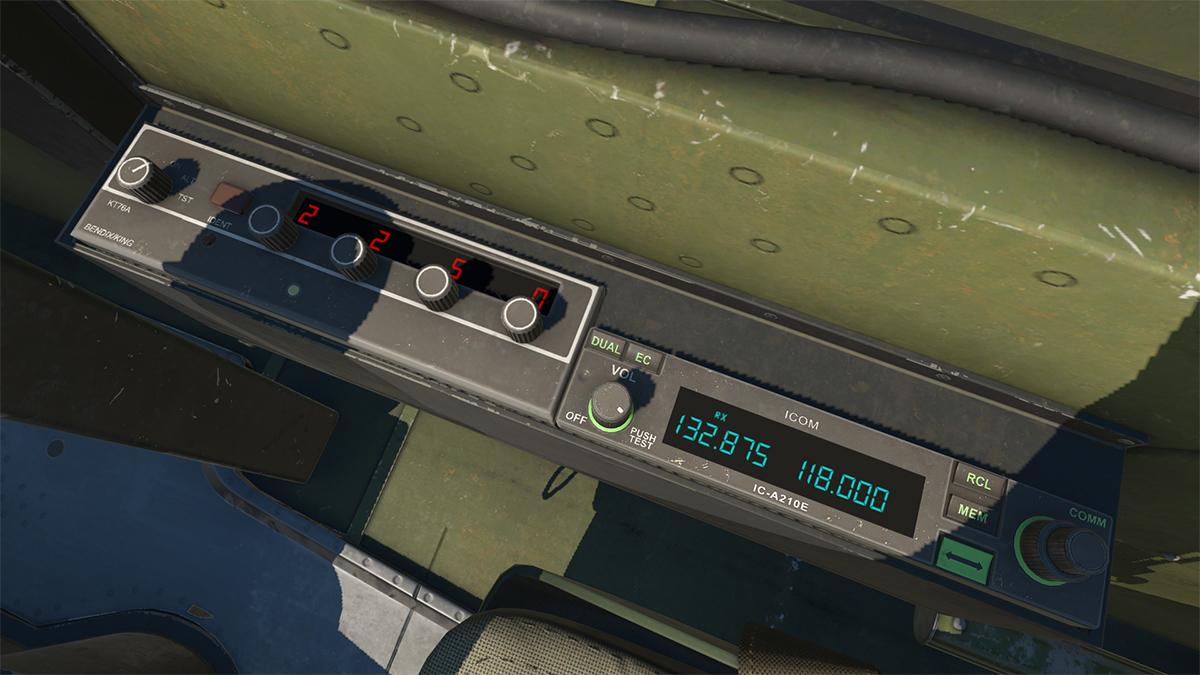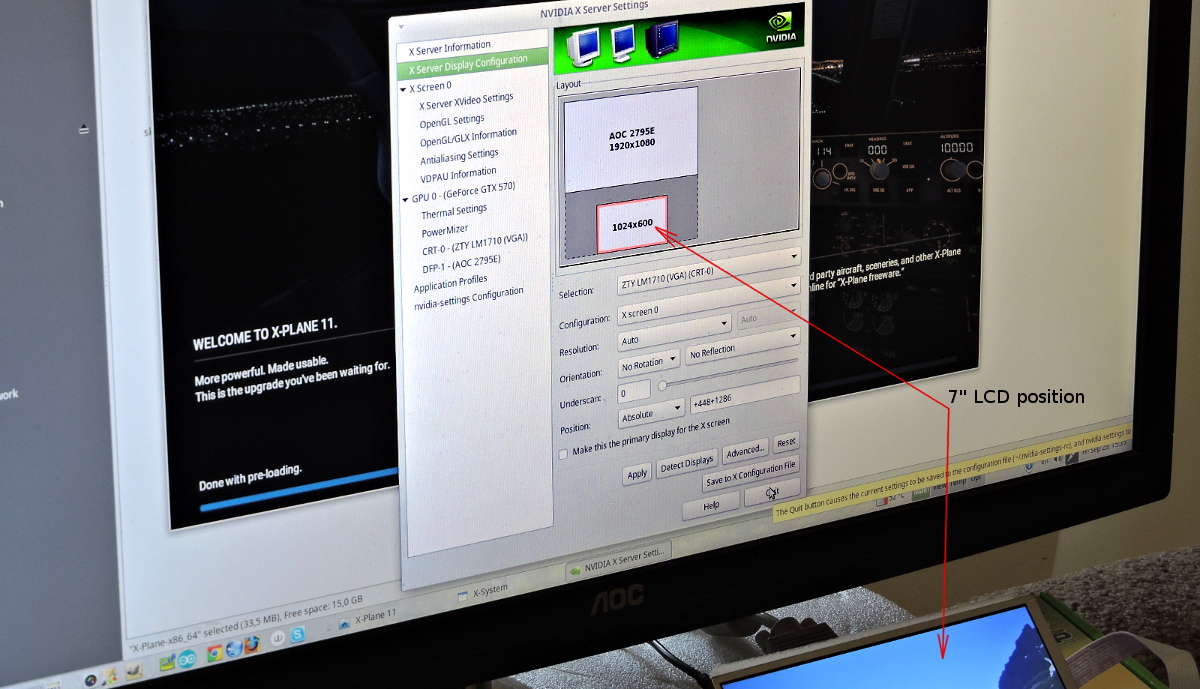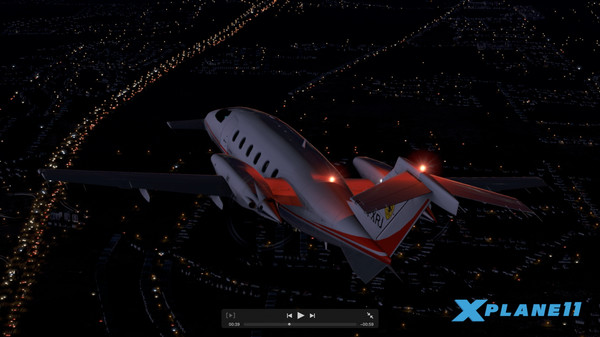Dec 11, 2015 I cannot open the graphic interface file! Asked Dec 11, 2015 by cpeddie (12 points) Download file. Directory of C: Users cap Documents X-Plane 10 Demo. As you may have noticed during installation, all KLN 90B flight plans are stored in X-Plane/Output/FMS plans/KLN 90B You may create a flight plan using an external tool and load the into the KLN 90B. To do so: Export the flight plan into the X-Plane format and copy it into the folder X-Plane. If your graphics card has too little VRAM for the textures X-Plane is loading (a very real possibility in Version 10), you may see a huge drop in frame rate. To correct this, try the following. Move the mouse to the top of the window, making the menu bar appear, and click Settings, then click Rendering Options. Now, go ahead and open up X-Plane 11, click on settings, and navigate to Graphics. Visual Effects and Texture Quality: The level of detail and how everything looks, can be defined by these sliders. These depends mostly on how much memory your GPU has.
A few notes on coordinate systems:
X-Plane uses three kinds of coordinates. Global coordinates are specifiedas latitude, longitude and elevation. Sandbox+ saints row 3. This coordinate system never changes butis not very precise.
OpenGL (or ‘local’) coordinates are cartesian and shift with the plane. They offermore precision and are used for 3-d OpenGL drawing. The X axis is aligned east-westwith positive X meaning east. The Y axis is aligned straight up and down at the point0,0,0 (but since the earth is round it is not truly straight up and down at otherpoints). The Z axis is aligned north-south at 0, 0, 0 with positive Z pointing south(but since the earth is round it isn’t exactly north-south as you move east or westof 0, 0, 0). One unit is one meter and the point 0,0,0 is on the surface of theearth at sea level for some latitude and longitude picked by the sim such that theuser’s aircraft is reasonably nearby.
2-d Panel coordinates are 2d, with the X axis horizontal and the Y axis vertical.The point 0,0 is the bottom left and 1024,768 is the upper right of the screen.This is true no matter what resolution the user’s monitor is in; when running inhigher resolution, graphics will be scaled.
Use X-Plane’s routines to convert between global and local coordinates. Do notattempt to do this conversion yourself; the precise ‘roundness’ of X-Plane’sphysics model may not match your own, and (to make things weirder) the user canpotentially customize the physics of the current planet.
X-PLANE GRAPHICS
These routines allow you to use OpenGL with X-Plane.
XPLMTextureID
XPLM Texture IDs name well-known textures in the sim for you to use.This allows you to recycle textures from X-Plane, saving VRAM.
Warning: do not use these enums. The only remaining use they have is toaccess the legacy compatibility v10 UI texture; if you need this, get it via theWidgets library.
| Name | Value | Description |
|---|---|---|
| xplm_Tex_GeneralInterface | '0' | The bitmap that contains window outlines, button outlines, fonts, etc. |
| xplm_Tex_AircraftPaint | '1' | The exterior paint for the user's aircraft (daytime). |
| xplm_Tex_AircraftLiteMap | '2' | The exterior light map for the user's aircraft. |
XPLMSetGraphicsState
XPLMSetGraphicsState changes OpenGL’s fixed function pipeline state. You are not responsiblefor restoring any state that is accessed via XPLMSetGraphicsState, but you are responsible fornot accessing this state directly.
- inEnableFog - enables or disables fog, equivalent to: glEnable(GL_FOG);
- inNumberTexUnits - enables or disables a number of multitexturing units.If the number is 0, 2d texturing is disabled entirely, as inglDisable(GL_TEXTURE_2D); Otherwise, 2d texturing is enabled, anda number of multitexturing units are enabled sequentially, startingwith unit 0, e.g. glActiveTextureARB(GL_TEXTURE0_ARB);glEnable (GL_TEXTURE_2D);
- inEnableLighting - enables or disables OpenGL lighting, e.g.glEnable(GL_LIGHTING); glEnable(GL_LIGHT0);
- inEnableAlphaTesting - enables or disables the alpha test per pixel, e.g.glEnable(GL_ALPHA_TEST);
- inEnableAlphaBlending - enables or disables alpha blending per pixel, e.g.glEnable(GL_BLEND);
- inEnableDepthTesting - enables per pixel depth testing, as inglEnable(GL_DEPTH_TEST);
- inEnableDepthWriting - enables writing back of depth information to the depthbufffer, as in glDepthMask(GL_TRUE);
The purpose of this function is to change OpenGL state while keeping X-Planeaware of the state changes; this keeps X-Plane from getting surprised by OGLstate changes, and prevents X-Plane and plug-ins from having to set all statebefore all draws; XPLMSetGraphicsState internally skips calls to change statethat is already properly enabled. Tidy trax hard dance and trance torrent pirate bay.
X-Plane does not have a ‘default’ OGL state for plug-ins with respect to theabove state vector; plug-ins should totally set OGL state using this API beforedrawing. Use XPLMSetGraphicsState instead of any of the above OpenGL calls.
WARNING: Any routine that performs drawing (e.g. XPLMDrawString or widget code)may change X-Plane’s state. Always set state before drawing after unknown codehas executed.
Deprecation Warnings: X-Plane’s lighting and fog environemnt is significantlymore complex than the fixed function pipeline can express; do not assume thatlighting and fog state is a good approximation for 3-d drawing. Prefer to useXPLMInstancing to draw objects. All calls to XPLMSetGraphicsState should haveno fog or lighting.

XPLMBindTexture2d
XPLMBindTexture2d changes what texture is bound to the 2d texturing target.This routine caches the current 2d texture across all texturing units in the simand plug-ins, preventing extraneous binding. For example, consider severalplug-ins running in series; if they all use the ‘general interface’ bitmap to doUI, calling this function will skip the rebinding of the general interface textureon all but the first plug-in, which can provide better frame rate son some graphicscards.
inTextureID is the ID of the texture object to bind; inTextureUnit is a zero-basedtexture unit (e.g. 0 for the first one), up to a maximum of 4 units. (This numbermay increase in future versions of X-Plane.)
Use this routine instead of glBindTexture(GL_TEXTURE_2D, ….);
XPLMGenerateTextureNumbers
Use this routine instead of glGenTextures to generate new texture object IDs.This routine historically ensured that plugins don’t use texure IDs that X-Plane isreserving for its own use.
XPLMGetTexture
XPLMGetTexture returns the OpenGL texture ID of an X-Plane texture based on ageneric identifying code. For example, you can get the texture for X-Plane’s UIbitmaps.
XPLMWorldToLocal
This routine translates coordinates from latitude, longitude, and altitude to localscene coordinates. Latitude and longitude are in decimal degrees, and altitude isin meters MSL (mean sea level). The XYZ coordinates are in meters in the localOpenGL coordinate system.
XPLMLocalToWorld
This routine translates a local coordinate triplet back into latitude, longitude,and altitude. Latitude and longitude are in decimal degrees, and altitude isin meters MSL (mean sea level). The XYZ coordinates are in meters in the localOpenGL coordinate system.
Language: multi. OS: MAC OS X. Release date: January 3, 2017. Acrobat mac os x.
NOTE: world coordinates are less precise than local coordinates; you shouldtry to avoid round tripping from local to world and back.
XPLMDrawTranslucentDarkBox
This routine draws a translucent dark box, partially obscuring parts of thescreen but making text easy to read. This is the same graphics primitive usedby X-Plane to show text files and ATC info.
X-PLANE TEXT
XPLMFontID
X-Plane features some fixed-character fonts. Each font may have its own metrics.
WARNING: Some of these fonts are no longer supported or may have changed geometries.For maximum copmatibility, see the comments below.
Note: X-Plane 7 supports proportional-spaced fonts. Since no measuring routineis available yet, the SDK will normally draw using a fixed-width font. You canuse a dataref to enable proportional font drawing on XP7 if you want to.
| Name | Value | Description |
|---|---|---|
| xplmFont_Basic | '0' | Mono-spaced font for user interface. Available in all versions of the SDK. |
| xplmFont_Menus | '1' | Deprecated, do not use. |
| xplmFont_Metal | '2' | Deprecated, do not use. |
| xplmFont_Led | '3' | Deprecated, do not use. |
| xplmFont_LedWide | '4' | Deprecated, do not use. |
| xplmFont_PanelHUD | '5' | Deprecated, do not use. |
| xplmFont_PanelEFIS | '6' | Deprecated, do not use. |
| xplmFont_PanelGPS | '7' | Deprecated, do not use. |
| xplmFont_RadiosGA | '8' | Deprecated, do not use. |
| xplmFont_RadiosBC | '9' | Deprecated, do not use. |
| xplmFont_RadiosHM | '10' | Deprecated, do not use. |
| xplmFont_RadiosGANarrow | '11' | Deprecated, do not use. |
| xplmFont_RadiosBCNarrow | '12' | Deprecated, do not use. |
| xplmFont_RadiosHMNarrow | '13' | Deprecated, do not use. |
| xplmFont_Timer | '14' | Deprecated, do not use. |
| xplmFont_FullRound | '15' | Deprecated, do not use. |
| xplmFont_SmallRound | '16' | Deprecated, do not use. |
| xplmFont_Menus_Localized | '17' | Deprecated, do not use. |
| xplmFont_Proportional | '18' | Proportional UI font. |
XPLMDrawString

This routine draws a NULL termianted string in a given font. Pass in the lowerleft pixel that the character is to be drawn onto. Also pass the character and font ID.This function returns the x offset plus the width of all drawn characters.The color to draw in is specified as a pointer to an array of threefloating point colors, representing RGB intensities from 0.0 to 1.0.
XPLMDrawNumber
This routine draws a number similar to the digit editing fields in PlaneMaker and dataoutput display in X-Plane. Pass in a color, a position, a floating point value, andformatting info. Specify how many integer and how many decimal digits to show andwhether to show a sign, as well as a character set.This routine returns the xOffset plus width of the string drawn.
XPLMGetFontDimensions
This routine returns the width and height of a character in a given font.It also tells you if the font only supports numeric digits. Pass NULLif you don’t need a given field. Note that for a proportional font thewidth will be an arbitrary, hopefully average width.
XPLMMeasureString
This routine returns the width in pixels of a string using a givenfont. The string is passed as a pointer plus length (and does not needto be null terminated); this is used to allow for measuring substrings.The return value is floating point; it is possible that future fontdrawing may allow for fractional pixels.

Need help understanding how to increase the frame rate of X-Plane 11 with the equipment you have? This guide will help you make the right decisions about what to turn up - and what to turn down.
Getting the Best Frame Rate Out of X-Plane 11
Did you know… That some people are richer than others? These richer people may buy more advanced and expensive equipment for their computer, particularly if it involves flight simulation. They may as well just buy a real plane and save the hassle of overclocking and crashing. Then again… Now, chances are, you’re not rich. This is why I created this guide - it helps you to get the most out of the computer you have for your flight simulation needs, or more specifically, X-plane 11.
The first thing you should know is that the more scenery that is visible in the sim, the more computing power you’ll need to view it all. So, if you’re flying around Pacific islands, you’ll have a whale of a time (see what I did there!) souping up the frame rate. But if you stick your aircraft somewhere else, such as London Heathrow for example (EGLL has great airport scenery - check it out!), things will go downhill quickly. With so much to render, it’s no wonder your frame rate will drop considerably with more stuff lurking around. Now, go ahead and open up X-Plane 11, click on settings, and navigate to Graphics.
- Visual Effects and Texture Quality: The level of detail and how everything looks, can be defined by these sliders. These depends mostly on how much memory your GPU has. A 4GB GPU will cope with this much better than a 2GB. Put simply: the further you ramp these up, the higher the quality of all the textures in the sim will be, and the more realistic it will feel.
- Antialiasing: You may have seen this setting and know what it does, but for those who don’t, increasing this slider will draw the sim a number of times (2x, 4x, 8x), which can help iron out the jagged edges present in the sim. The speed on which your GPU operates at is primarily responsible for this, so a more powerful GPU will allow you to draw everything a few more times and make everything super smooth.
- Draw shadows on scenery: Click on this button to destroy your GPU. Just kidding! If you want to draw shadows on everything with a reasonable frame rate, you’ll need the GTX 1080Ti overclocked to max - and it isn’t even available yet. Put simply: this should be checked for the views only. Don’t use it continuously if you don’t have a decent GPU.
- Number of World Objects: Self-explanatory. Be wary that this predominantly lies with the CPU. An Intel i7 6950X will be more than up to the challenge, but a Pentium may struggle to cope with the medium setting.
- Reflection Detail: A new addition in X-Plane 11, reflections will bounce light off the wing and at the 'camera”. This is part of the idea that energy must be conserved, hence why the brilliant fog effects were added to make lighting realistic (I still can’t get over how cool the fog looks!). This mainly affects the CPU. Overclock yours if you can to get the best out of it - reflections are well worth it in the Cessna 172!
- Draw parked aircraft: Low texture quality, completely stationary aircraft and thus, high performance make this option a must. Each ramp at custom airports is designed with a maximum and a minimum class in mind, so you won’t find Boeing 737s parked on in a small airfield with a grass strip in the middle of the country. Similarly, you won’t find a Cessna 172 parked at terminal 5 at Heathrow Airport. Not with a £650+ (~$810+) landing fee attached to each landing anyway…
- Two or more monitors: Adding monitors with the Full Screen Simulator option selected will drastically reduce your frame rate. Using the Instructor Operating System (with a very annoying acronym) is perfectly fine, and highly recommended! It’s best to use just one monitor for the views, but I’m not stopping you from using more. Also, increasing the field of view will bring more textures and objects into view, further reducing frame rate. Try keeping this value to 60-63.
- Flight Models per Frame: Another thing to bare in mind is the Flight Models per Frame, found in Flight Model under the General tab. Increase this if you are flying one light, fast or small aircraft; otherwise, keep it at 2. Turning this up to 10 with 20 AI aircraft crashing around you will SERIOUSLY reduce frame rate below double digits. So seriously - keep it down.
Referring back to the introduction, I'm not rich, but nonetheless, I have an i5 4690K and an MSI GTX 970. I find that the CPU struggles with basic reflections, and the GPU will cope with everything until I turn AA up to 8x, where the sim slows down to a crawl. I can't keep scenery shadows on either, as my PC won't cope.
The developers recommend an Intel 6700K/7700K and a GTX 1070 for the best value for money - any higher, and one will bottleneck the other, so it's money wasted.

Written by Draco.
Recommended for You:
- All X-Plane 11 Guides!

X Plane Graphics Interface File Size
You May Also Like:Free Plane Graphics
